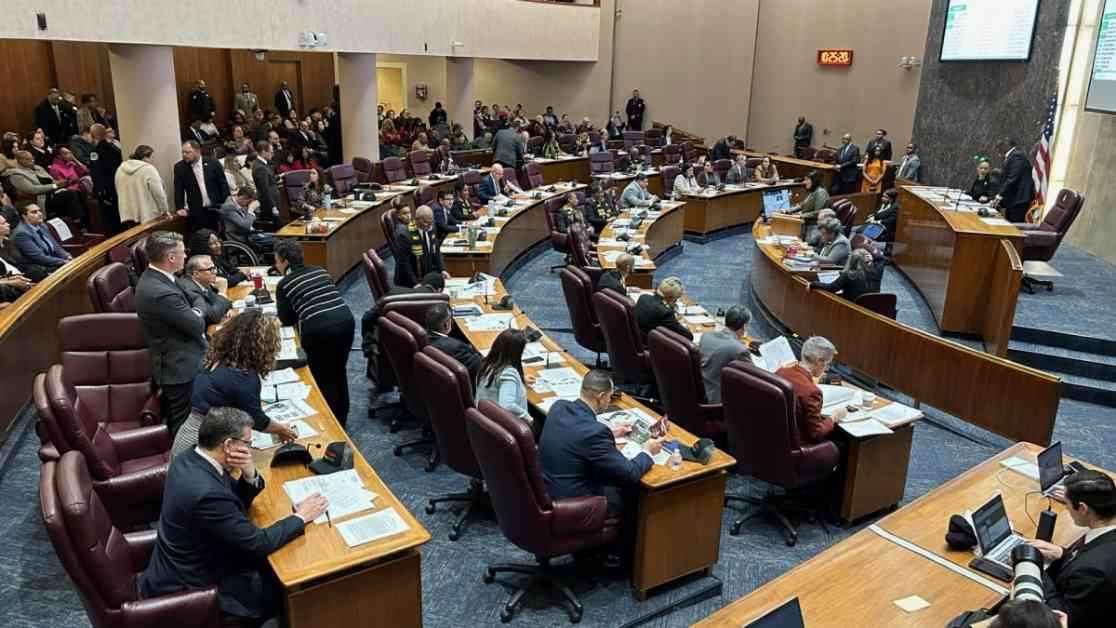Chicago City Council Rejects Proposal to Lower Speed Limit
In a recent decision that has sparked debate and disappointment among safety advocates, the Chicago City Council voted down a proposal to decrease the speed limits on most of the city’s streets from 30 to 25 miles per hour. The contentious ordinance was defeated by a close 28-21 vote during a session held on Wednesday, leaving many residents and lawmakers divided on the issue.
The initiative, initially recommended by the Committee on Pedestrian and Traffic Safety earlier this year, aimed to address the alarming rise in crashes and pedestrian fatalities within the city. Citing a report from the Governors Highway Safety Association, which highlighted a 40-year high in pedestrian fatalities in 2022 due to increased incidents of distracted driving and speeding post-COVID, proponents of the bill emphasized the urgent need for action to enhance road safety.
One of the key supporters of the proposal, Alderman Daniel La Spata, underscored the potential benefits of reducing speed limits by pointing to successful outcomes in other cities that had adopted similar measures. La Spata highlighted examples from various urban areas, including Oak Park, Evanston, New York, and Minneapolis, where lower speed limits had led to a decrease in the number of crashes, serious injuries, and fatalities.
However, the proposal faced significant opposition from lawmakers like Alderman Christopher Taliaferro, representing the city’s 29th ward, who raised concerns about the placement of traffic enforcement cameras. Taliaferro expressed apprehension that the implementation of speed cameras could disproportionately affect minority communities, particularly Black neighborhoods, leading to financial burdens due to higher ticketing rates.
Data from an analysis conducted by ProPublica revealed that between 2015 and 2019, households in predominantly Black and Hispanic ZIP codes in Chicago received tickets at nearly twice the rate of those in white areas. This information underscored the need for a more equitable approach to traffic enforcement to prevent further disparities among different demographic groups within the city.
Leading up to the decision, the City Council emphasized statistics indicating the critical impact of speed on pedestrian safety, noting that individuals have a 90% chance of surviving being hit by a vehicle traveling at 20 miles per hour, compared to a 60% chance at 30 miles per hour. Such data underscored the potential life-saving benefits of reducing speed limits to protect vulnerable road users.
Drawing insights from the experience of other cities, such as Seattle, which saw a significant decrease in injury crashes following the implementation of similar legislation, the Chicago City Council faced a pivotal moment in deciding the fate of the speed limit proposal. While the measure failed to pass in Chicago, other metropolitan areas like New York are forging ahead with plans to adopt lower speed limits, indicating a growing trend towards prioritizing road safety.
As the debate surrounding speed limits continues to evolve in urban centers across the country, the need for thoughtful, evidence-based policies to protect all road users remains paramount. Balancing the goals of reducing fatalities, promoting equitable enforcement practices, and enhancing overall road safety will require ongoing collaboration and dialogue between lawmakers, community members, and safety advocates.
The decision by the Chicago City Council to reject the proposal to lower speed limits reflects the complex challenges and competing interests at play in addressing road safety in a bustling urban environment. While the outcome may not have been what some had hoped for, the discussion surrounding this issue serves as a reminder of the ongoing need to prioritize safety and well-being on our city streets.












